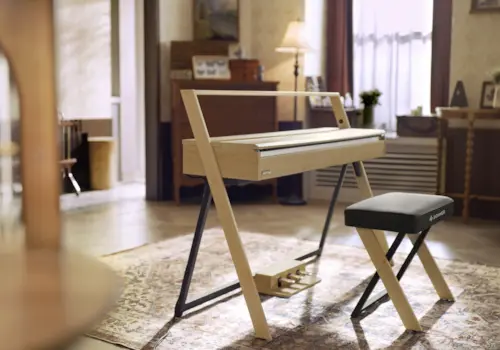No one said learning the piano is simple, but it’s a lot easier when you have one of the new generation of app-based learning tools to guide you, says John Evans.
A leading one among them is flowkey, an exclusive partner of Yamaha. As a former piano teacher myself and today a keen pianist, I was interested to try flowkey and see how it might help a beginner, although it also caters to intermediate and more advanced learners.
First things first: If you want try it too, you’ll need a piano or keyboard, of course, and a phone, tablet or computer to run the app. It's available on both iOS and Android. All set, it’s time to find out what flowkey can do.
flowkey listens
Like any good teacher, flowkey's approach is clear and straightforward and supported by video tutorials shot from above the keyboard that clearly show the pianist’s hands and fingers as they play the exercise or piece. These are narrated patiently, without the kind of exaggerated enthusiasm that can grate. There are step-by-step courses covering a range of core topics, a huge and comprehensive song library spanning all the main genres and arranged for different skill levels (we know that classical pieces are not ‘Songs’; it’s just a popular term for musical pieces of all types) and, intriguingly, smart learning tools that almost mirror a flesh-and-blood teacher in the way they guide you.
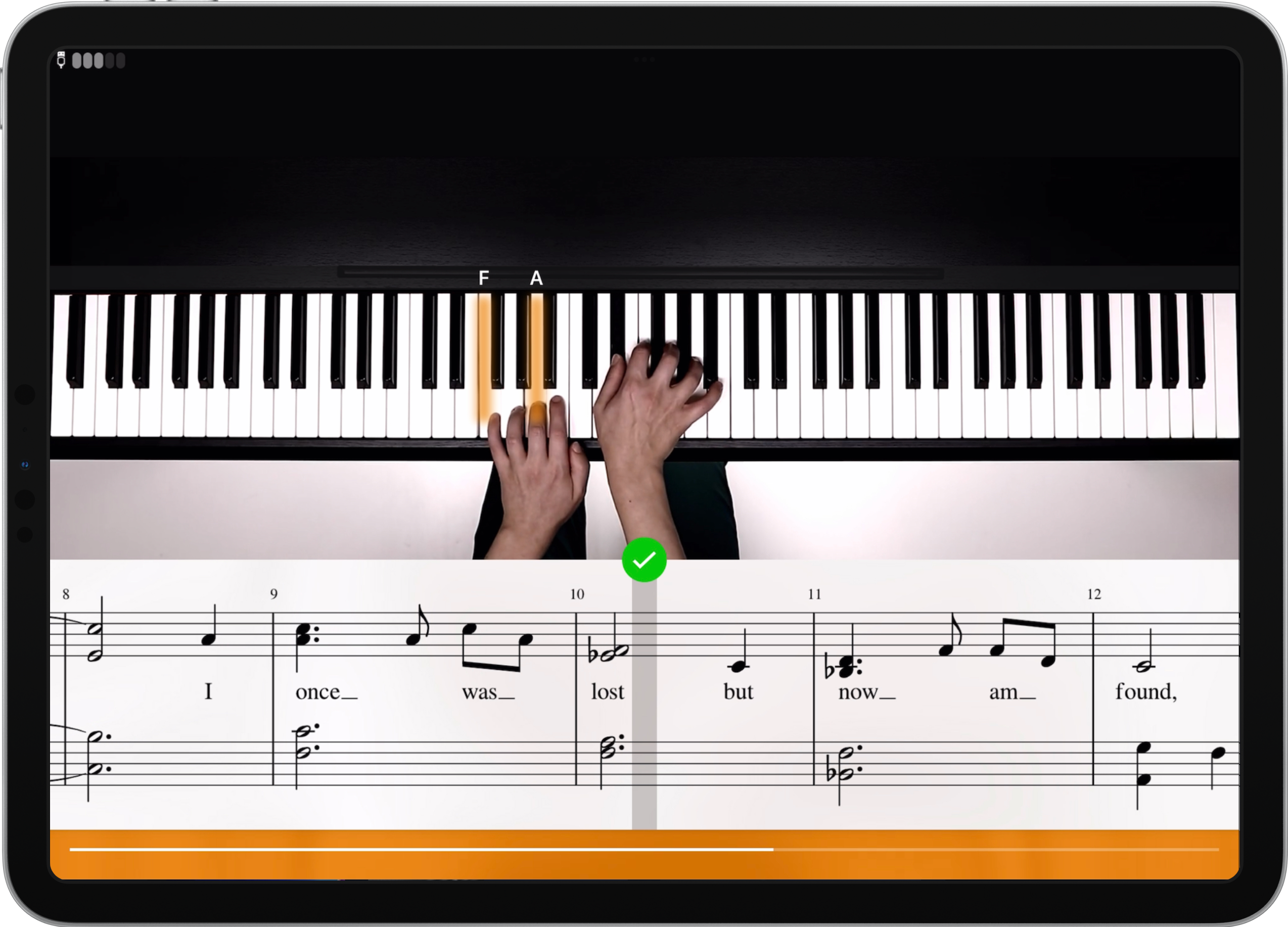
It’s as if flowkey were in the room with you, which, in a way, it is. The app listens via your device’s microphone and scrolls through the score as you play. If you’ve selected Wait Mode, the app will wait for you to play the correct note before continuing at your own pace. You can also return to the beginning of a section (which you can highlight) to practise again or correct a mistake.
At this point, we should say a reliable internet connection is essential to ensure your flowkey experience runs smoothly. A slow or intermittent connection can mean the pair of you get out of sync with each other.
But I’m getting ahead of myself. From the home screen the pianist is presented with a choice of destinations: Songs, Search (where you can discover and learn songs arranged to one of three skill levels) and Courses covering a range of essential techniques (for example, playing scales and arpeggios, playing with both hands, and reading a score).
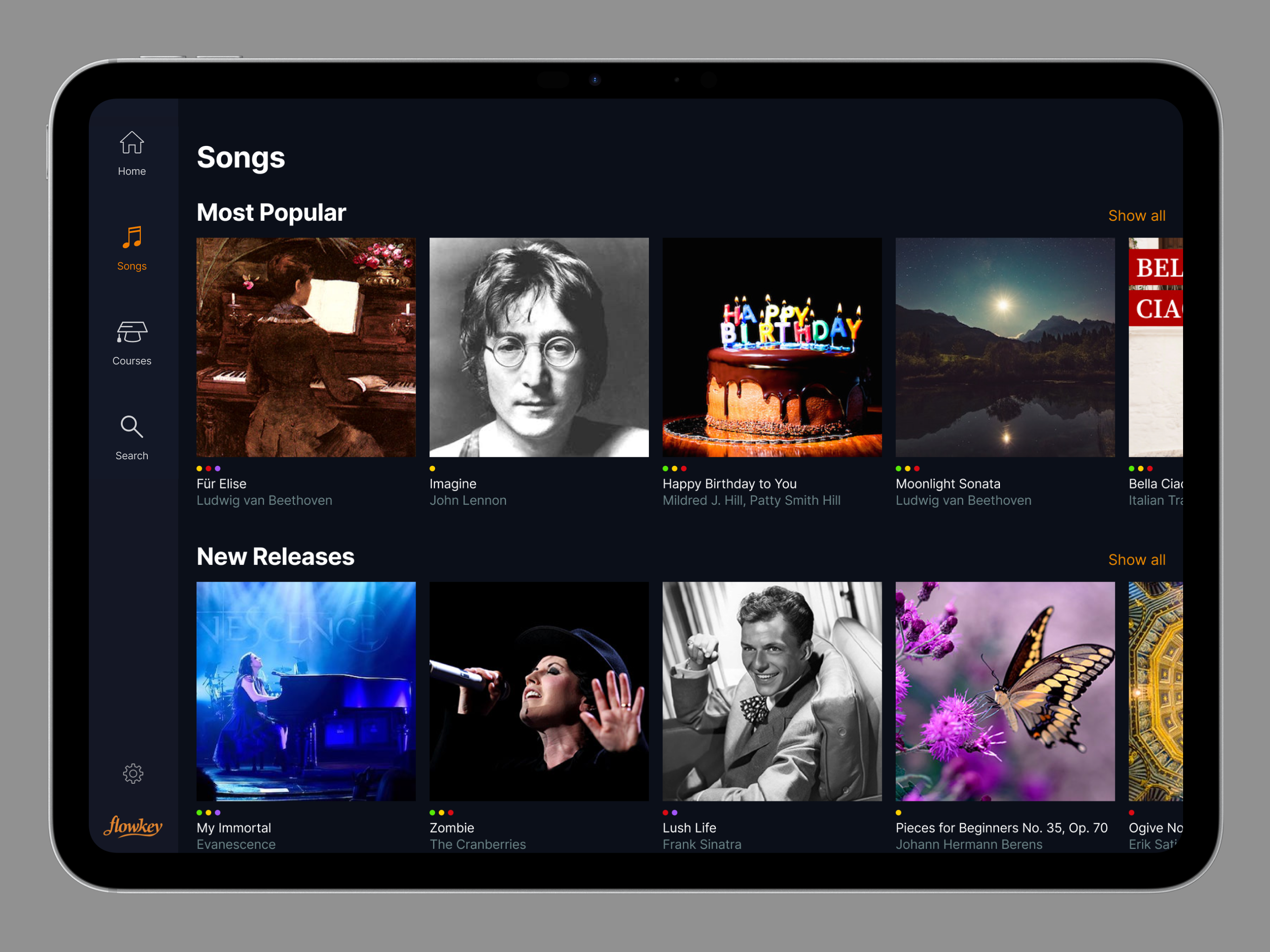
flowkey demonstrates
Taking Courses first: flowkey's introduction to the concept of flats in the key of D minor is a good example of its methods and approach. After placing your device on the piano or keyboard, you simply select the exercise and click past the introductory screen. This takes you to a video showing the pianist’s hands from above the keyboard. Correct notes are rewarded with a tick displayed against the note you played, but if you play an incorrect note, the screen pauses until you play the right one.
Press Play on the screen and the flowkey pianist plays, hands separately at first and later hands together. The video shows you which fingers to use and how to move your thumb under or over, both topics also covered separately in detail. The score also shows the fingering.
Demonstration complete, it’s now your turn to play the scale. You follow the score and, if you wish, also watch the video pianist’s hands. To help guide you, flowkey highlights the key to be pressed while the tutor plays silently in sync, so you hear only your playing. Correct notes are rewarded with a tick, but if you play an incorrect note, the screen pauses until you play the right one. It’s slow but thorough work.
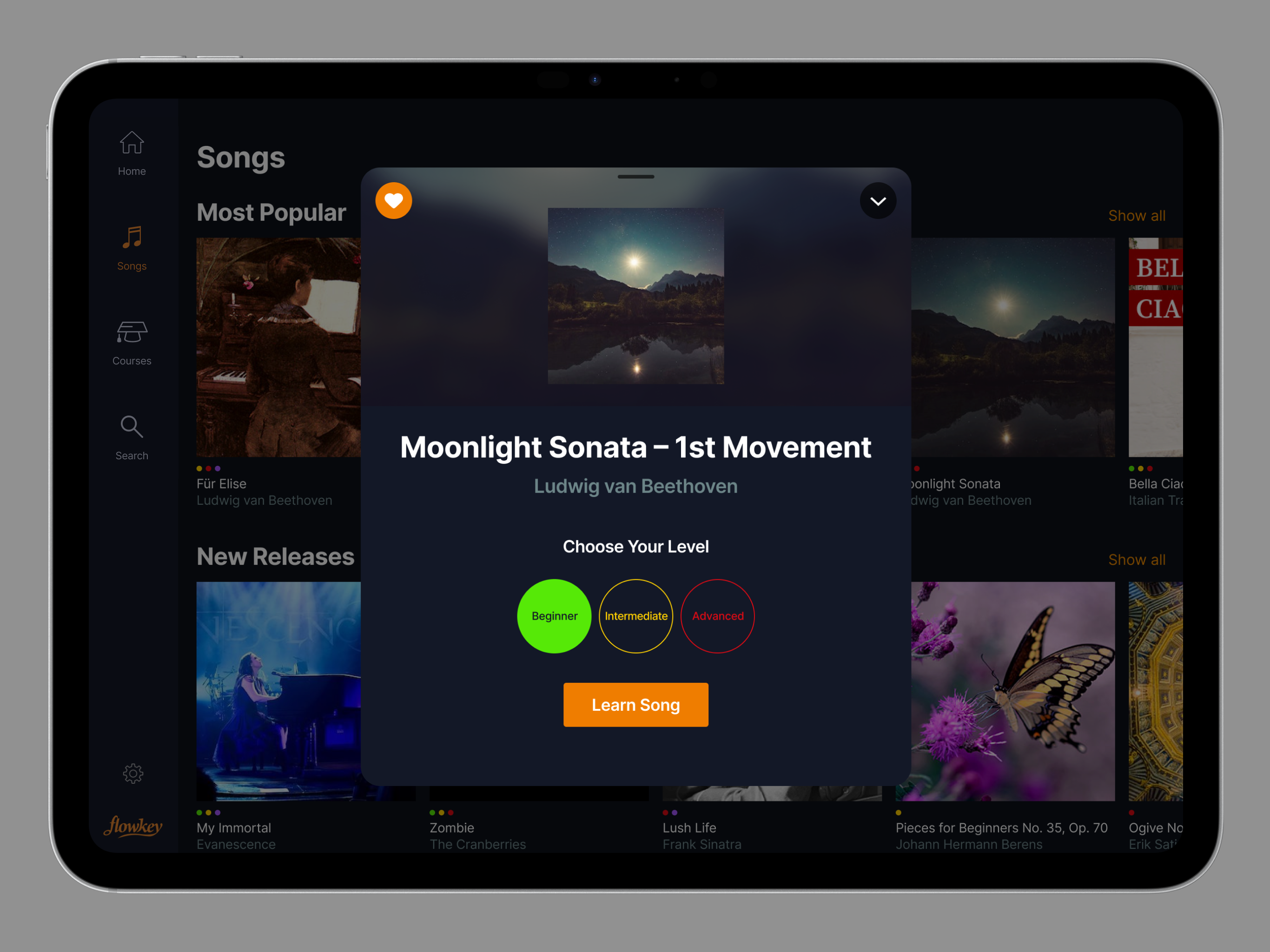
flowkey guides you
By this time, you probably want to play something. Head to Songs and choose a piece from the library. Select your skill level (we’ve chosen Mozart Minuet in D major K.7 arranged for Beginner). You’re presented with an image of the keyboard and below it the first few bars of the score. Between them are two hand symbols for right and left, separated by a Play symbol. Look again at the score and you’ll also see a couple of arrows, one pointing backwards, the other forwards. This is a clever device that allows you to isolate a passage and practise it before moving on.
So now you’re ready to play. Choose to play the right hand alone by clicking on it and this will prompt another clever device: Wait mode, plus a choice of two tempos – 50% and 75%. Press Play and, as with the scale exercise, the video pianist plays silently while the correct notes are highlighted. You read and play the score alongside. Make a mistake, and the pianist pauses until you play the correct note. Repeat for the left hand, and when you’re happy, play hands together.
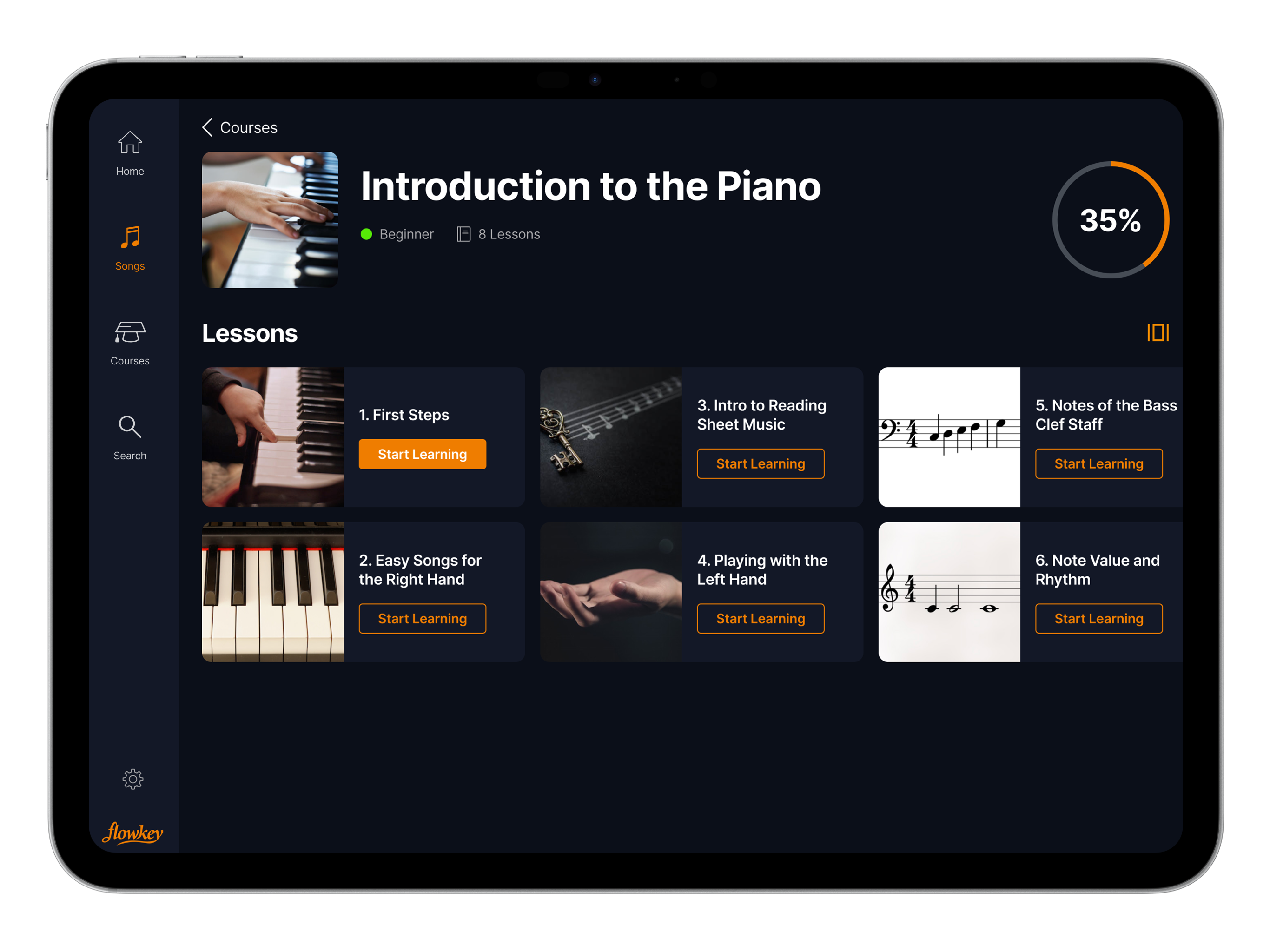
flowkey helps you discover music
We’ve only explored a fraction of flowkey’s features and potential, but hopefully we’ve given you a taster of those that make it such an interesting and engaging aid to learning the piano. Flowkey’s ability to listen and react to your playing is, if you’ll pardon the pun, one of the keys to its appeal. Another is its emphasis on traditional learning techniques familiar to all piano teachers, such as playing hands separately, moving the arms and wrists correctly, and breaking down the music into short passages that you can practise.
Finally, unlike some learning apps, it doesn’t attempt to reinvent the wheel but presents music in its traditional notated form, ensuring that once you’ve mastered it, you’ll be well equipped to explore the world of piano music on your own. Give flowkey a try!





